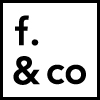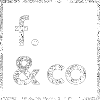
Make some of your own
The brothers Kelley are famous the world over. In the fields of innovation, creativity and design, their contributions, both in products, services, as well as in methods and theories, have been invaluable to a whole generation of young design thinkers and innovators. Their work at IDEO stands out as laying both ground rules for the future of work and the foundations on which entire organizations and industries will soon be built.
I have had the chance to meet with Tom Kelley last November during Wallonia’s Creativity Week. A passionate man, he told us how IDEO’s brainstorming techniques were incessantly being perfected. How, in a way, design thinking was being design thought, constantly, iteratively, creatively. Thus, when, a few weeks ago, Tom and David launched their first joint piece of literary exploration, « Creative Confidence », I couldn’t help but jump at the opportunity to review it.
The 300-page book takes the reader through a journey that aims to explore the future of work, from the heart of innovation through applied techniques and several case studies that enlighten their core belief: « that we are all creative ».
"most companies are still organized
in a way « where creatives are
a clearly designated group – an exclusive club »."
As an introduction to design thinking and creativity, this book is flawless. Starting with a Venn diagram illustrating their posture, the authors explore everything that’s in and around what they call the « sweet spot » , a mixture of feasibility, viability and desirability. In order to do so, they write, one must learn to temporarily put aside his or her analytical thinking skills and let « unresolved issues hang in the air ». Despite the discomfort and anxiousness that may accompany such indeterminacy, step one tells us to not, ever, jump to conclusions.
Undoubtedly the best takeaways from the book involve business most specifically. Quoting the example of one of their business development colleague, Jill Levinsohn, the Kelleys point out how even today, most companies are still organized in a way « where creatives are a clearly designated group – an exclusive club ». In the advertising world, and elsewhere, this segregation leads individuals to perceive themselves as « non-creatives ». The authors are quick to point out how, « we didn’t know, as children, that we were creative. We just knew that it was okay for us to try experiments that sometimes succeeded and sometimes failed ». Somewhere, sometime, some of us lost their way and forgot that.
Assuredly, gaining creative confidence needs discipline. Though, as we can all be sure, attending a d.school seminar with one of the two brothers can facilitate that, it is not practical or affordable to everyone. Hence the book.In it, the empowerment behind the concept of creative confidence relates to the notion of « situational discipline ». In other words, discipline is better gained when working in teams, benefiting from collective intelligence; a point made brilliantly by Professor Laurent Simon in a blog post on C2MTL’s page two years ago. Great groups are not only able to work as fluid communities, they also do things. « Great groups ship », write the authors. They operate, when successful, very much along the lines of dreams with deadlines ».
« Bird-by-bird », a child’s study of ornithology described in the book serves as a reminder of the complexity of the world and the regularity of effort required to face it. Beyond the systemic and theoretical, several concrete steps can be taken, immediately. Changing the format of meetings is one. « Boyle’s Law », named after one of IDEO’s master prototypers, Dennis Boyle, is one such rule : « never go to a meeting without a prototype ». Fighting PowerPoints fiercely is another. Indeed, taking action pre-emptively, investing one’s time to save others’ clearly should be on the agenda – everyone’s agenda – and constitutes one of the key lessons to be learned from the book. As the radio journalist Scoop Nisker used to say, « if you don’t like the news, go out and make some of your own ». This is, more or less, what empowered design thinkers and business innovators should be doing. Right now.
The book ends with ten « challenges » to be applied (quite literally) in professional, educational or personal contexts. It also references several (some of them free) ressources from the IDEO / d.school ecosystem, such as the Design Thinking for Educators toolkit, the Virtual Crash Course innovation workshop or the Bootcamp Bootleg collection of creative methods that can all serve to stimulate each individual’s, and ultimately entire organization’s creative confidence. If there’s something to be done, don’t try. Simply do it. Now.
This post was first featured on the C2-MTL blog. The author is a blogger and an ambassador for the conference, which in its third year, will welcome speakers such as James Cameron, Muhammad Yunus and Christian Louboutin. Some tickets are still available.


